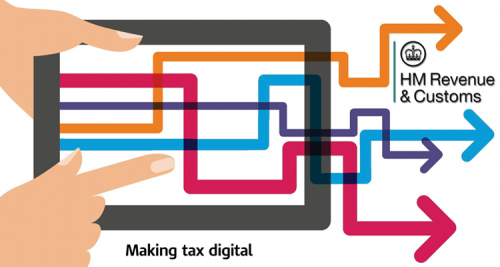8 insights into Making Tax Digital
Our expert webinar panel discussed implementation timelines, opportunities, challenges, preparation, and more
Our expert webinar panel discussed implementation timelines, opportunities, challenges, preparation, and more

Accountancy Age recently held a webinar on Making Tax Digital, discussing implementation timelines, opportunities, challenges and preparation, and more.
Our expert panel consisted of:
Listen to the webinar on demand here.
Here are our eight key takeaways from the webinar.
The MTD initiative initially came about to address roughly £9.5bn of the tax gap that is lost annually due to clerical errors and carelessness.
Despite this, a key message from the webinar was that MTD should not be viewed as the latest compliance hurdle from HMRC, but rather as an initiative addressing the wider global shift to digital – with benefits abound.
Our panel of experts reiterated the abundant benefits of making the switch to digital.
For businesses, the burden of administrative tasks can be shouldered by software, freeing up business owners’ time.
For accountants, MTD allows them to move into a more advisory role as they can access and visualise data in real time and advise clients on how to react to affect outcomes.
One of the central concerns surrounding MTD has been from businesses, typically in rural areas, who do not have sufficient access to the internet.
Our panel discussed how the government has committed £1bn to fund full fibre broadband across the country, building upon existing infrastructure.
Furthermore, to connect with HMRC and fulfil the digital obligations, only a very small bandwidth of 2MB per second is required – meaning the vast majority of businesses should not struggle with connectivity issues.
HMRC’s pilot on MTD for income tax is in the “controlled go live” phase, which includes directly invited participants, typically brought in by their software providers.
HMRC has successfully tested the ability of businesses to link software with HMRC systems, and to allow agents to work on behalf of their clients by accessing and submitting their information online.
In the next stage, anyone can voluntarily join the pilot for income tax.
The pilot for VAT will commence spring 2018.
The costs of MTD will vary across businesses depending on their level of software usage, although original HMRC consultations predicted that the costs would “average about £280 per business” in the year of transition.
Despite any initial costs, our panel discussed how in the long run MTD will likely be a cost saving measure for businesses, by reducing the administrative burden and allowing them to run more efficiently.
As we know, the first intake for MTD will be April 2019 for businesses with taxable supplies above the VAT threshold of £85,000.
Our panel discussed how HMRC plans to extend the intake in April 2020 at the earliest, and that income tax is likely to follow VAT.
For VAT businesses, MTD will require quarterly reporting, which is no more than already required.
Additional information can be provided voluntarily.
Earlier this year HMRC chose to heed the concerns of businesses and accountants and delay the original MTD intake timetable.
However, a crucial message of the webinar was to urge businesses not to put the switch to digital on the backburner due to the extended timelines. The direction of travel is clear, and the shift to digital is inevitable, so it is best to begin preparations as soon as possible.
To hear our expert panel discuss all of the issues above, and much more, listen to our webinar on demand.